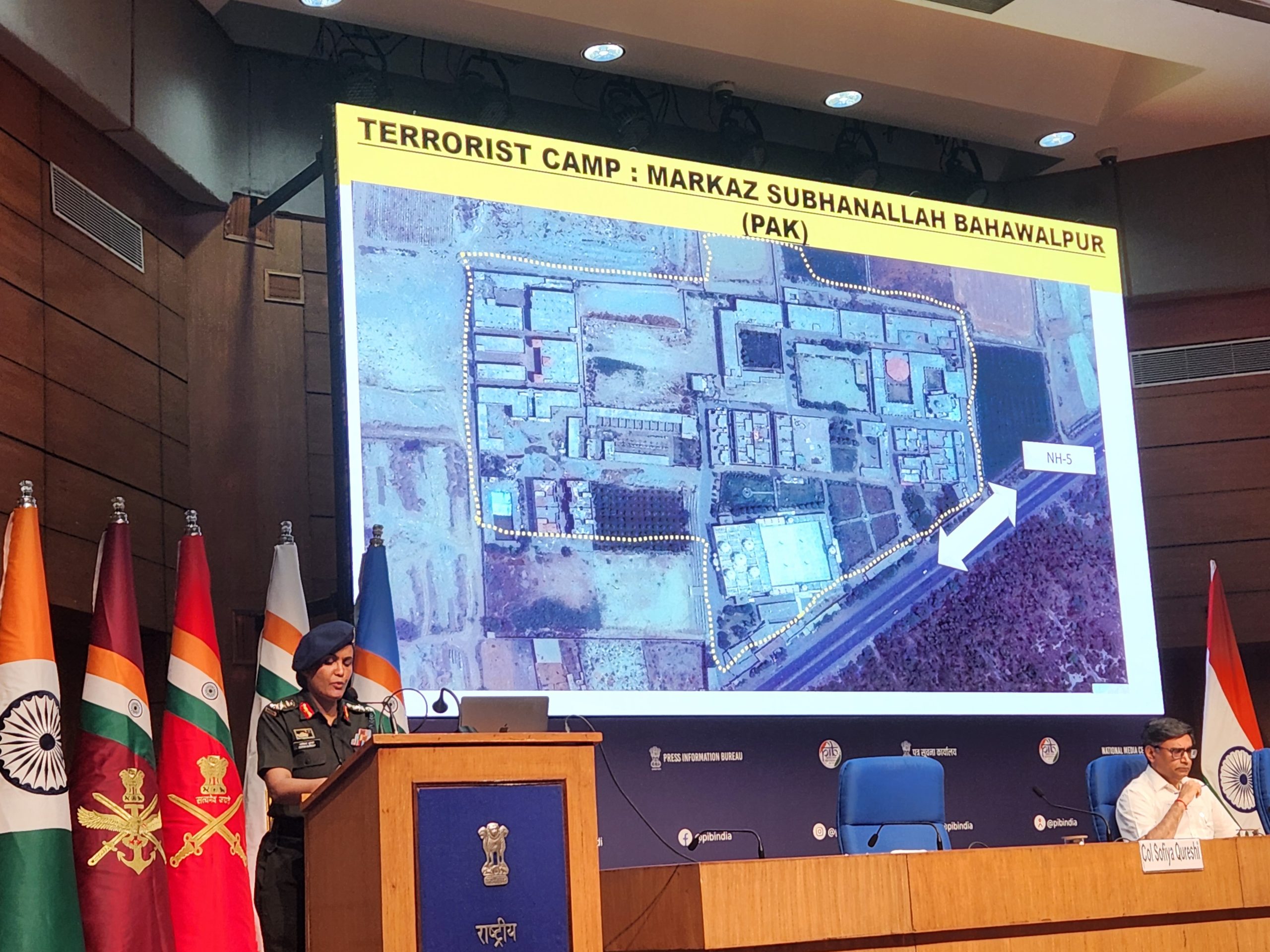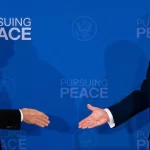
India’s Defence Industrial Mindset needs a Rethink - From Catching Up to Getting Ahead
November 25, 2025

Blog

Military Victory in Modern Conflicts
Posted by admin
In the annals of history, military victory was once a clear-cut affair. Battles ended with visible, unequivocal outcomes, one side surrendered, fled the battlefield, or was decisively vanquished. Victory was tangible as cities were captured, flags were lowered and treaties signed. However, as the character of warfare has evolved, the lines between conventional and hybrid conflict have blurred; the conflict extends from the TBA to cyberspace, and the criteria for determining victory have become equally complex.
So, how does one determine who has “won” in modern military engagements? The answer is multi-layered and deeply contextual for every operation. A look at some critical factors with special reference to Op Sindoor:-
Traditional Metrics of Victory. Historically, territorial gain was often the primary indicator of success. Whether it was the Roman conquest of Gaul or the Allied advance into Berlin during World War II, seizing and holding ground was a definite statement of dominance and victory. Alongside this were enemy casualties and the loss of military assets, used to assess which side suffered more and who inflicted greater damage. In more recent memory, the 1971 India-Pakistan War offered this clarity as India captured over 90,000 prisoners of war, Bangladesh was born and Pakistan was decisively defeated, both strategically and politically.
But such absolute outcomes are increasingly rare. In contemporary conflicts, victory may not lie in land seized or tanks destroyed, but in achieving limited objectives, sending strategic signals, or maintaining moral and political resilience.
Victory in the Modern Age. Modern warfare, particularly between nuclear-armed states, tends to be limited in scope and duration. Objectives are often narrowly defined to avoid escalation and maintain control. Operation Sindoor between India and Pakistan is a case in point. India, in response to the Pahalgam terror attack launched a calibrated military operation. Its stated aim was clear- “to deliver a message to Pakistan that terrorism emanating from its soil would invite direct and decisive retribution”.
This objective was not only met but perhaps exceeded on the first night of the operation. Indian air and missile strikes targeted nine terrorist camps deep within Pakistan, using long-range precision weapons like SCALP and Hammer missiles and Harop loitering drones. The strikes were delivered without crossing into Pakistani airspace, showcasing technological superiority and strategic restraint. Importantly, they inflicted heavy damage on terrorist infrastructure while avoiding civilian casualties and large-scale military confrontation.
From this angle, India achieved its military and political objectives swiftly and effectively, thus qualifying the operation as a strategic success, regardless of Pakistan’s retaliatory measures.
Psychological Dimension. In asymmetric or limited warfare, psychological impact becomes a central determinant of victory. A side may lose in terms of casualties or hardware but can still “win” by sustaining morale, willpower, and the political narrative. For example, the Vietnam War remains a classic case where the United States inflicted massive damage on North Vietnam but failed to break its will to fight. Ultimately, it was the political and psychological space that determined the outcome. Similarly, the Kargil War in 1999 saw India reclaim all its lost positions, Pakistan framed its withdrawal as a tactical move rather than a defeat for its domestic population, though internationally it stood isolated.
Narrative-building becomes crucial. In Operation Sindoor, despite India’s clear military upper hand, Pakistan’s media and official channels claimed to have repelled Indian strikes and inflicted losses, a psychological balm for domestic audiences, despite lacking evidence.
Clear Aim. A key determinant in declaring victory is whether a military operation was launched with a defined objective, and whether that objective was met without disproportionate cost. When goals are clear, assessing outcomes becomes easier. For example, Russia’s invasion (Special Military Operation as they call it) of Ukraine – what began with seemingly clear aims of decapitating the Ukrainian government and capturing key cities was met with fierce resistance. As months passed and Russia revised its objectives, the metrics of success became increasingly blurred. Despite Russia’s territorial gains in the Donbas, its broader strategic goals remain elusive, while Ukraine’s ability to withstand and counter-attack has allowed it to claim psychological and diplomatic victories.
Therefore, the clarity and attainability of initial objectives can define whether an operation ends in success, stalemate, or failure.
The Cost Factor. Victory cannot be divorced from its cost. A side may achieve its objectives but at such great expense, military, economic, or political that the gain is rendered hollow. This is where the concept of a “Pyrrhic victory” comes in. For instance, the Soviet invasion of Afghanistan in the early 80s ultimately became a strategic disaster despite initial tactical gains.
In contrast, during Operation Sindoor, India’s use of long-range stand-off weapons allowed it to minimise risk and casualties, keeping its own losses negligible. The strikes delivered results without triggering full-scale war or drawing international condemnation. This favourable cost-benefit balance further strengthens India’s claim to a limited but decisive victory.
Competing Claims and Perceptions. In today’s interconnected world, perception often shapes reality. Both sides in a conflict may claim victory, each tailoring the narrative for domestic and international audiences. After Operation Sindoor, Indian media highlighted the precision and message-sending nature of the strike, while Pakistani outlets focused on supposed interceptions and retaliatory capability, despite little independent verification. This duality isn’t new. Following the Balakot airstrikes in 2019, India maintained it had destroyed terror camps, while Pakistan denied any casualties and claimed to have captured an Indian pilot as a sign of triumph. The truth lay somewhere in between, but both sides had enough to project strength to their populations.
In the end, military victory in modern times rests on a combination of factors. They include Military/Political objective, narrative control, strategic signalling and cost- benefit analysis etc.. India’s actions in Operation Sindoor met these criteria. It signalled resolve, imposed costs on terrorist infrastructure, maintained escalation control, and emerged diplomatically intact. By contrast, Pakistan’s retaliation was reactive, limited in scope, and strategically ineffective.
In Conclusion
Modern military conflicts no longer lend themselves to neat conclusions. The absence of formal surrenders or treaty signings means that victory is often interpretive, shaped by goals, outcomes, and perceptions. What matters most is whether a nation can emerge stronger, safer, and more secure – militarily, politically, and diplomatically, than it was before the conflict began.
Operation Sindoor showed that even limited, precisely executed operations can alter the strategic calculus. For India, the operation was a measured demonstration of resolve. For Pakistan, it was a reminder of its vulnerabilities. Who won? The side that achieved its aims with clarity and restraint. In today’s world, that might be the only victory that truly counts.
Col Ashwani Sharma (retd), Editor
11 Replies to “Military Victory in Modern Conflicts”
Leave a Reply
Search Blog
Categories
Popular Posts







Very aptly brought out. Our National strategic aims of striking the terrorists/ their handlers and defining red lines to the belligerent Pakistan were adequately achieved.
Indian aim of steadfast move on the economic ladder was also achieved by not escalating Operation Sindoor to a full fledged war. India’s demonstration of superior precision war machinary showcasing to the world will definitely earn a good in the weapon market. Also, announcing to the world that India has arrived as a super power.. ….Well almost close to it.
Excellent Analysis! Keep it up brother!! Try and get the material losses of both sides to also determine the win/ loss criteria!! It will definitely be a more objective analysis!
Thank you Sudhir. I quite agree with your views – India did send a message to the world.
Thank you Ajit. Material losses are not so relevant really
I’ve been in the US since mid-Mar and have observed the narrative and media barrage of all the countries involved. Lt Gen Shokin Chauhan’s recent articles on the subject are very relevant.
This first mover Sino Pak narrative of 7 th May is still milking the world opinion and the Chinese, in my view have scored greatly in this J-10C vs Rafale space, the next round would see them bring on the J-35 and similar hardware along with newer missiles, updated algorithms, more LEO satellites making this a electronic war that may find us facing greater challenges. The recent Stimson Centre review painted us in a good light. I’m hoping our guys have learnt their lessons and are getting better equipped, thinking smarter, and updating algorithms to ensure we stay ahead of all competition.
K Harisenani
A very apt and lucid analysis. With so many domains involved, kinetic, political, psychological, perception, diplomatic, economic etc, it is difficult to distil a clear winner. Hopefully the adversary will learn that henceforth every terror act will be dealt with heavier losses, in terms of costs. The larger ideological conflict continues, however. Sir, I regularly follow your writing.
Apt observations Jayant. Thank you 🙂
The latest development in Russia-Ukraine war with use of FPVs destroying numbers of bombers at Belaya Airfield further highlights the realist analysis by the editor in the article.
The next confrontation with our adversaries would showcase more technological advancements defining prowess in widening grey zone of such conflicts……
Excellent abd objective analysis. A must read for every one.
Thank you Gen Raj
Chinmay, thank you. The manner of assault using drones is innovative and will queer the pitch in the tactical domain